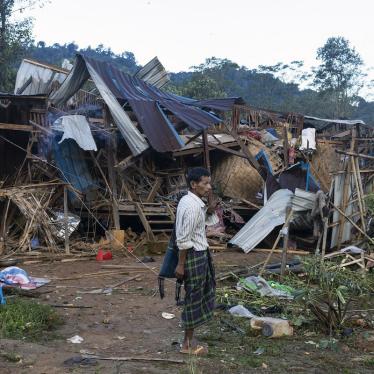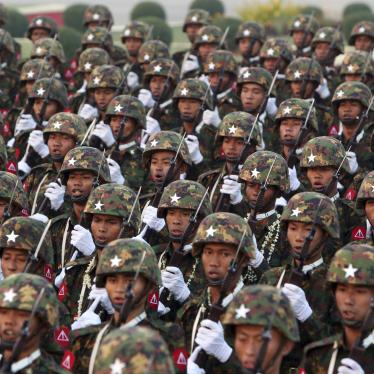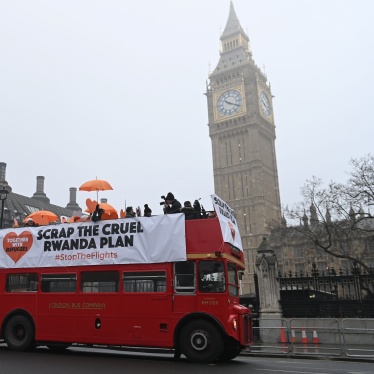(New York) – Insurgent groups in Afghanistan have escalated their targeted killings of women and religious minorities, Human Rights Watch said today. Recent attacks have killed at least five women, mostly journalists and media workers, and seven factory workers from the minority Hazara community.
The Afghan authorities should carry out prompt and thorough investigations into the killings, which are apparent war crimes, and prosecute those responsible wherever possible.
“A recent surge in targeted killings appears intended to drive women from public life and spread terror among minority communities,” said Patricia Gossman, associate Asia director. “Unidentified attackers have also gone after journalists, civil society activists, and professionals, killing many, driving some from the country, and leaving the rest to live in fear.”
The Afghan Journalists Safety Committee reported that 14 women working for media outlets in Afghanistan were threatened or violently attacked in 2020. An increasing number of Afghan women in journalism have left the profession because of worsening security and threats – a trend that emerged after 2015 and has accelerated.
The Islamic State of Khorasan Province (ISKP), an armed group affiliated with the Islamic State (also known as ISIS), has claimed responsibility for many recent attacks in Jalalabad city, the capital of Nangarhar province. The group has posed a serious threat to civilians since about 2015 when its members began a campaign of intimidation and brutal attacks against the local population.
In many cases, insurgents have accused the women of violating social norms by taking on a public role. It is often not clear whether the ISKP, the Taliban, or other groups are responsible for the threats and attacks.
On the morning of December 10, 2020, Malala Maiwand, the first woman TV presenter for Enikass News in Nangarhar province, was killed along with her driver, Tahar Khan, when gunmen opened fire on their car near Jalalabad. Although the Nangarhar governor announced on December 28 that a suspect had been arrested, no further information about the case has been released.
In two separate attacks on March 2, 2021, gunmen fatally shot three women – Mursal Waheedi, Saadia Sadat, and Shahnaz Raufi – who worked at Enikass News dubbing foreign language news reports. A government official initially claimed that one of the gunmen had been arrested, but later admitted that the suspect had been arrested in an earlier incident. Enikass News had previously received threats about its news coverage.
A woman who had worked as a reporter for several years told Human Rights Watch that she left Afghanistan in late 2020 after she received warnings from intelligence officials that insurgents from the Islamic State affiliate were plotting to kill her. She said:
In the past 10 years, I have always been threatened for working as a female journalist, but I knew this time that this was different. Since I was working from home, I thought I am going to be safe. Our office had also been threatened a week before, and we were all tasked to work at home for security reasons. A few days after, my office delivered me the same message that I should restrict my movements because I am under threat.
A journalist who had worked for a television news outlet said that she left her job in mid-2020 after receiving threats from an unknown caller who said, “What kind of Muslim woman are you – working for news agencies?”
Members of ethnic minorities have also been targeted. On March 4, gunmen fatally shot seven Shia Hazara laborers at a plastics factory in the Sorkh Rod district of Jalalabad. The men were found with their hands bound. The Islamic State affiliate has claimed responsibility for many attacks that have targeted civilians in predominantly Shia neighborhoods, including Shia mosques in Kabul and some other cities in recent years.
Taliban forces have also been responsible for many targeted attacks on civilians, including the killing of Elyas Dayee, a journalist, in an IED explosion in Helmand on November 12. The Taliban has threatened many Afghan journalists in the months following the start of talks between the Afghan government and the Taliban on September 12.
Journalist Nusrat Parsa told Human Rights Watch that he received increasing threats from armed groups because of his reporting on controversial subjects including sex trafficking and Afghanistan’s LGBT community. He left Afghanistan in January after receiving additional threats related to protests in Kabul over the government’s failure to investigate the killing of journalist Yama Siawash in November 2020. Although no longer in the country, Parsa has said he continues to receive death threats from the armed group Hezb-i Islami, whose members have been responsible for many targeted attacks on civilians.
Because many attacks on journalists go unclaimed and the Afghan government rarely investigates threats or attacks on journalists, there has been a growing climate of fear among the Afghan media. Other armed entities, including criminal groups, government-backed militias, and politicians also use threats and violence to intimidate the media, making it difficult to determine with certainty who is responsible for some threats and attacks. “That’s the fear,” one Kabul-based journalist said. “It’s all around and you don’t know who or what is behind it.”
“Afghan authorities should conduct transparent and effective investigations into all targeted attacks, and to the extent possible, prosecute those found to be responsible,” Gossman said.








